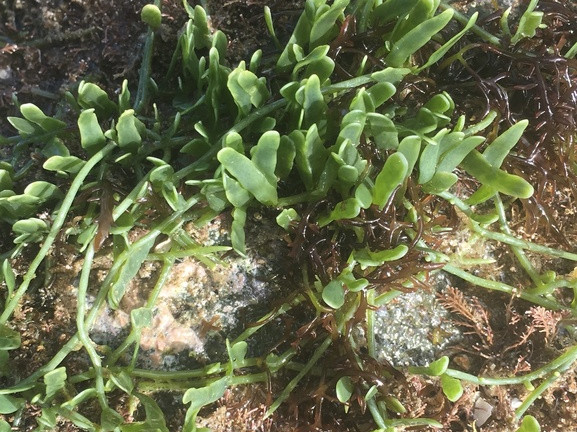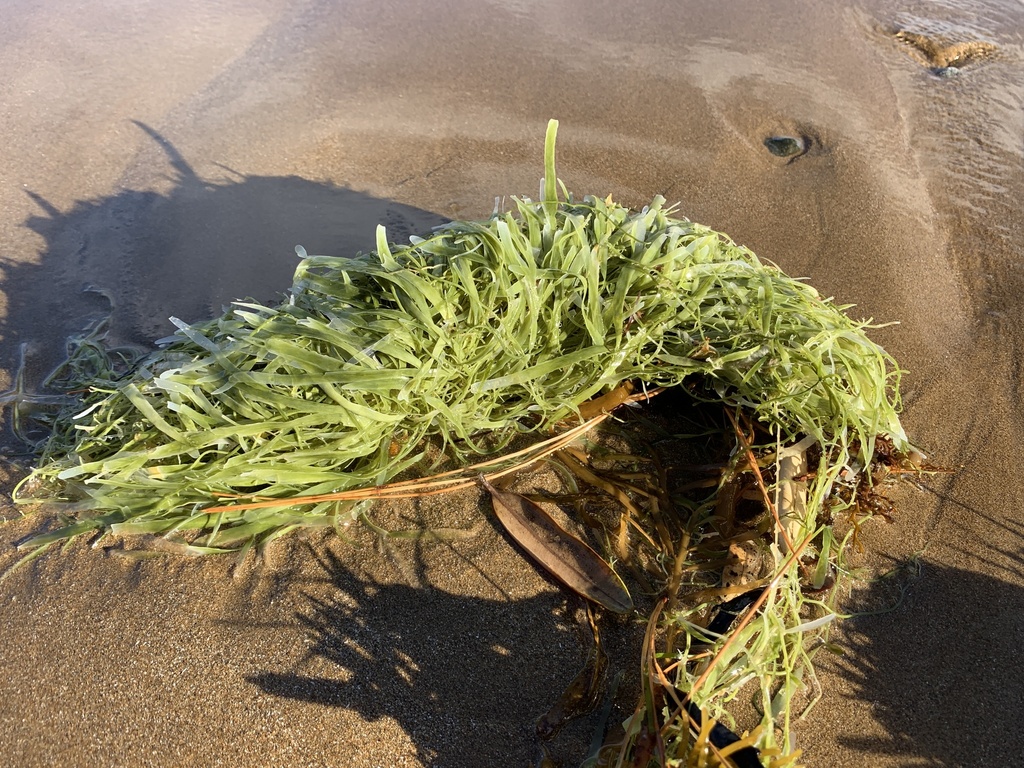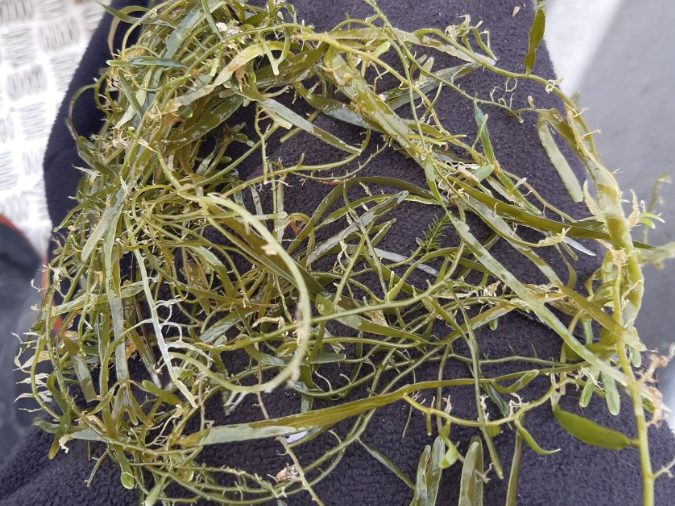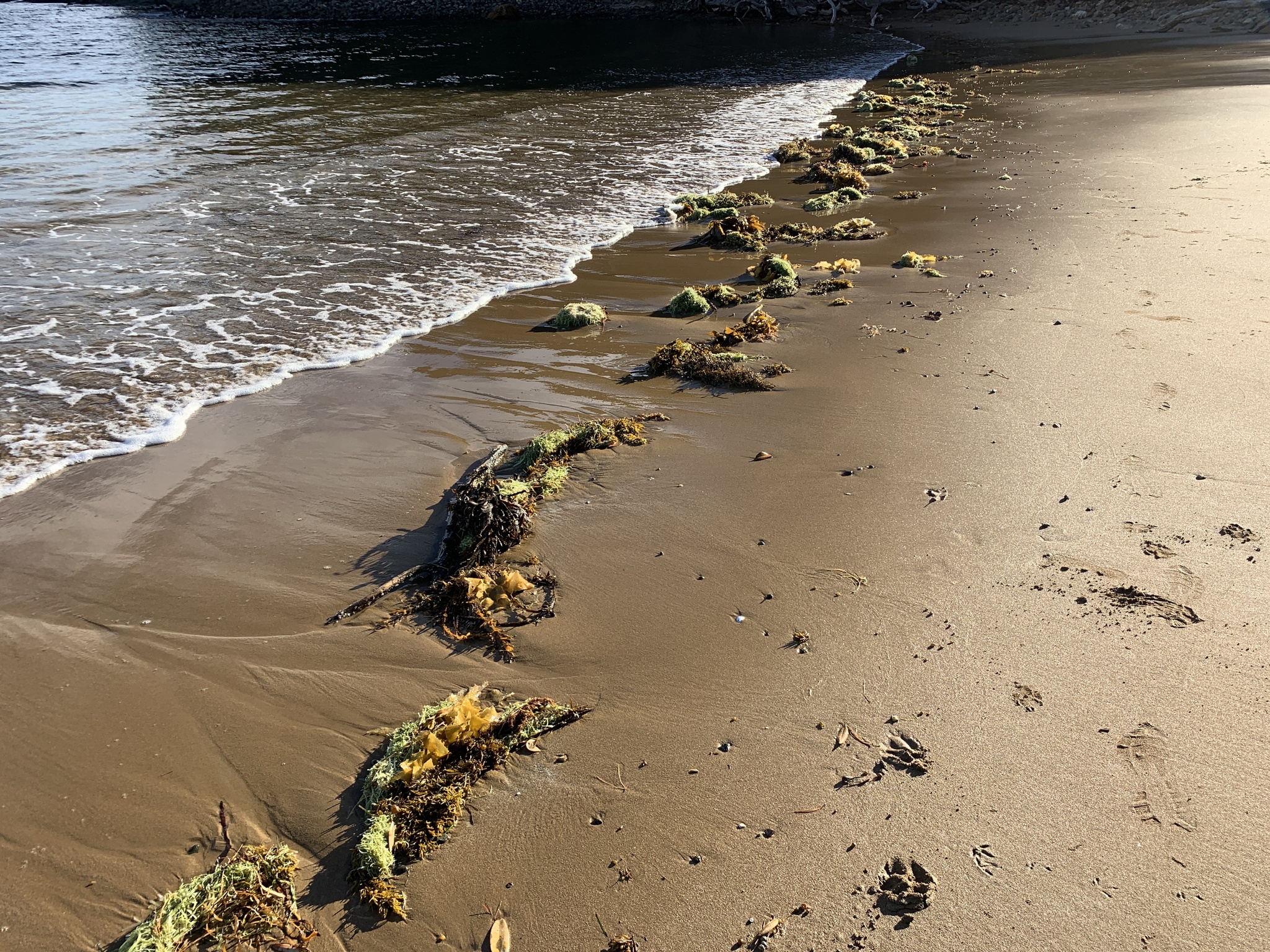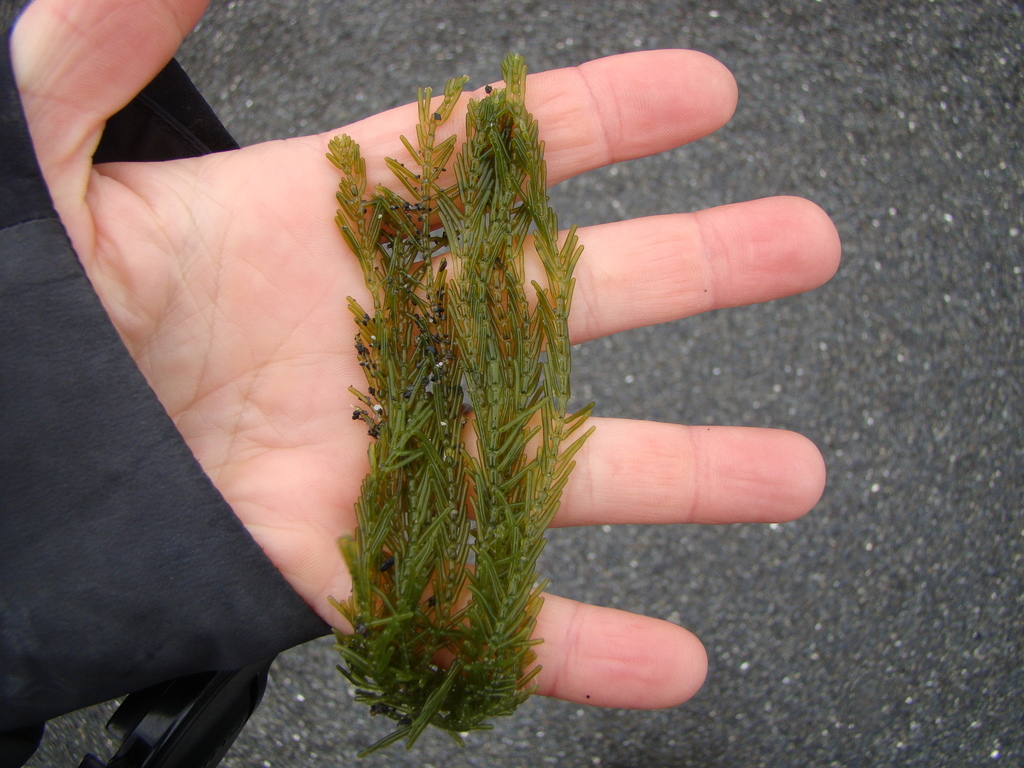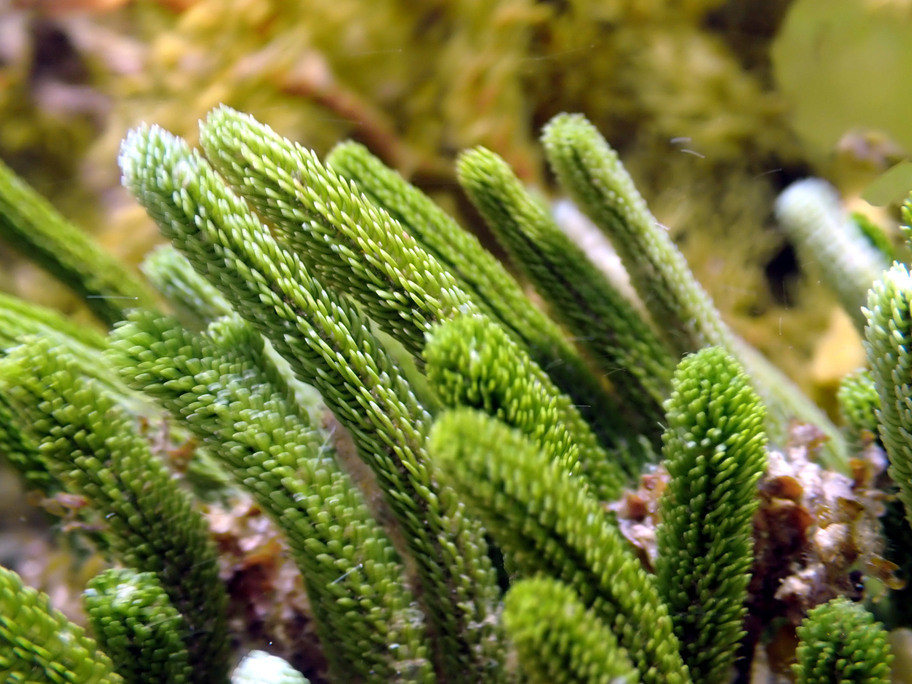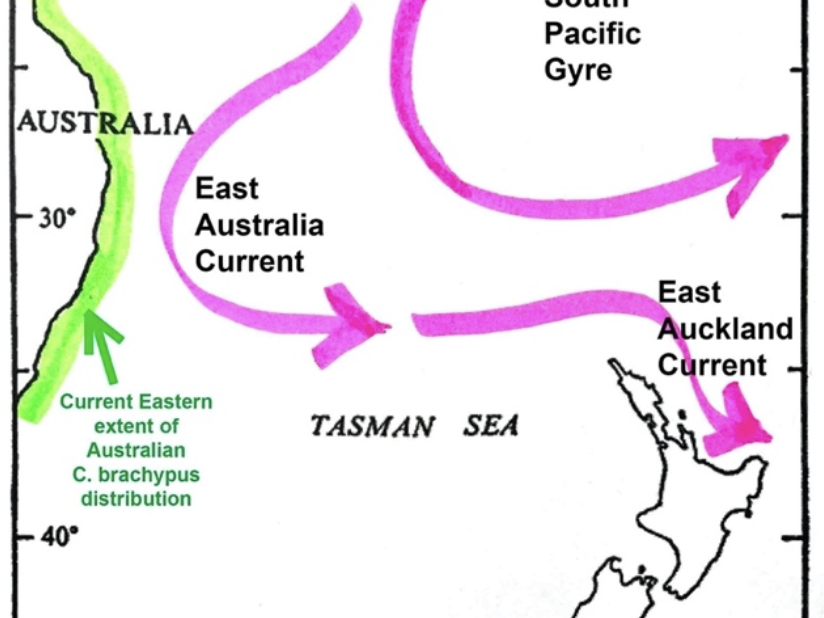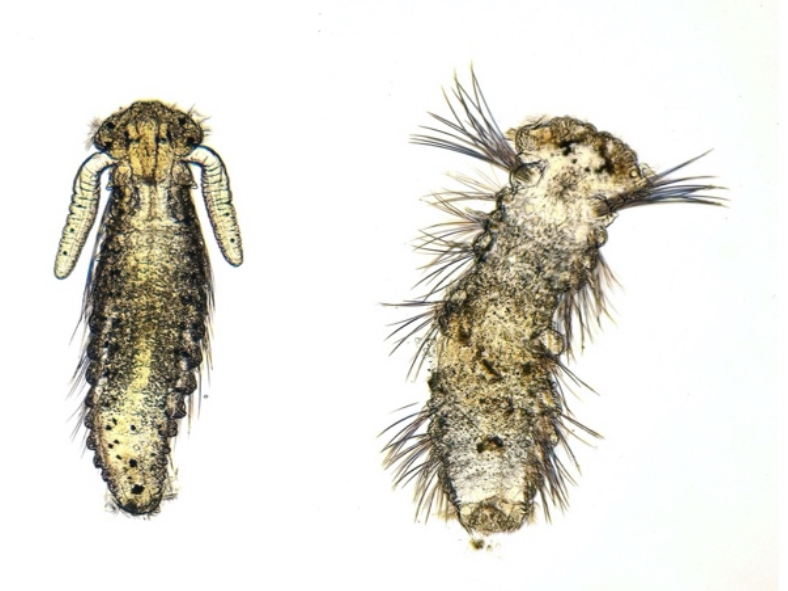Caulerpa - An invasive marine seaweed. What to look out for ... and what's next?
Author: John SibleyDate: July 2023
Caulerpa brachypus and Caulerpa parvifolia are two almost identical species of invasive exotic seaweed that have been found growing intertidally on Aotea Great Barrier Island (2021) and now Kawau Island (2023). We need your help to detect it if it arrives on Tiritiri Matangi.
The Caulerpa species grow extremely rapidly and are said to smother everything living on the seabed. Native species either move away or die. The photos below are of C.brachypus on Aotea Great Barrier by kind permission of Jack Warden who discovered them there in 2021.
If it does establish itself on Tiritiri Matangi our Mana whenua may declare a rāhui over Tiritiri Matangi’s beaches and Biosecurity New Zealand and the Department of Conservation will impose legal controls on all boating and water activities to try and limit its spread. Whilst walking between the Wharf and Hobbs Beach please keep an eye open for this highly invasive seaweed which may be washed ashore amongst other flotsam on the tide line. You might not see it growing in situ unless it is an extremely low spring tide.
Caulerpa is a genus of marine algae with over 100 species spread widely over the Indo-Pacific region in warm tropical and subtropical seas. Most of these species are extremely variable in size and shape. In addition to the 100 or so known species, over 40 varieties are known. Many of these can also adapt and exist in more than 60 variable morphs (shapes or forms) depending on environmental conditions such as temperature and degree of exposure (wave impact). This can make precise identification difficult, to say the least.
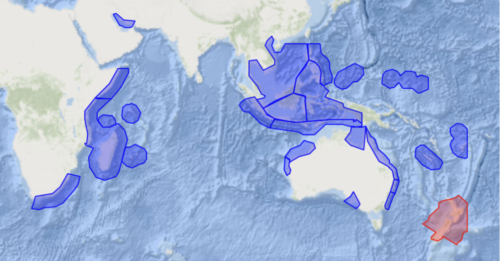
The map above shows the current distribution of C. brachypus in the Indo-Pacific region (NZ in red). Controlling Caulerpa is very difficult due to its rapid growth rate and its ability to spread asexually using creeping runner called stolons, and by fragmentation when boat anchors or rough seas break it up.
Trials have been done using salt crystals spread onto the weed at a rate 25kg per m3 with hessian matting and tarpaulins on top to kill it by “osmotic shock” (salt essentially sucks water out by osmosis and it shrivels up). One Australian attempt involved strong chlorine bleach. Either way, as you can imagine the collateral damage to other native sea life is considerable and the week is soon back if just a small amount survives.
If you think you have discovered something suspicious washed up on the strandline, take a photo of it and report it to the rangers.
Several benign species of Caulerpa are native to New Zealand coastal waters and unlike the more recent invaders are not of concern. It would be useful to know what these native species look like to avoid any false alarms.
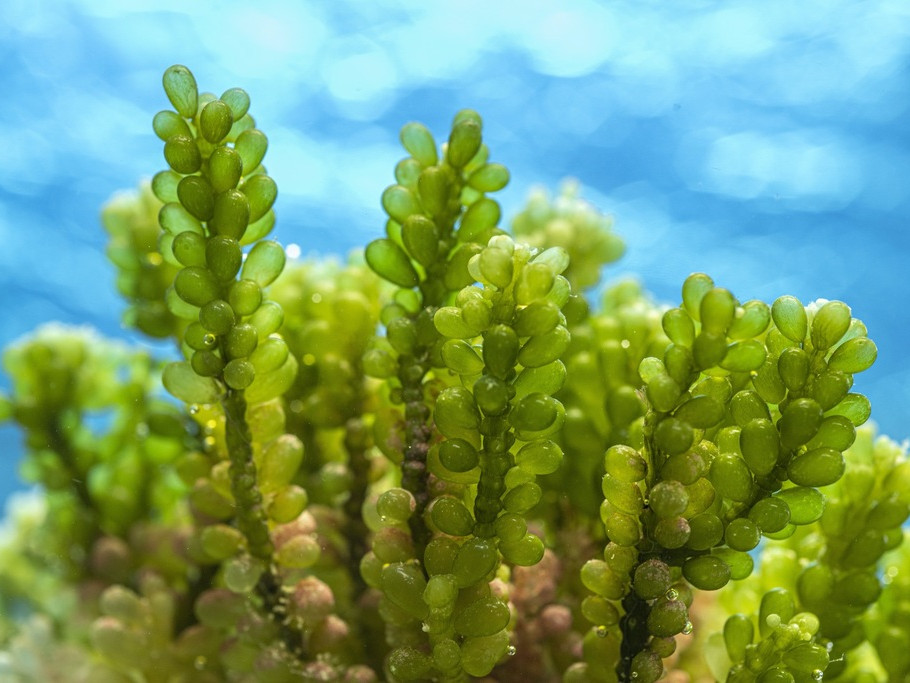
These photos are by courtesy of Lisa Bennett and Matt Tank.
C. articulate (first photo being held) has a feathery flat appearance, hence its other name “Sea Rimu”, but unlike C.taxofolia it has bumps or “joints” along its midrib. The thallus has side “leaves” that are also more slender than C.taxifolia.
C. brownii (second photo) has a rounded “bottle-brush” like cross-section to its thallus.
C. geminata (third photo) is our third native species and has a very distinctive thallus with “leaves” like small beads or bunches of grapes.
Of these three native species, I have only ever seen C. germinata locally, usually living in protective rock crevices at or below low water mark.
Most of the time Caulerpa species reproduce asexually by fragmentation, with sexual reproduction occurring infrequently. It seems to depend on local conditions. Some researchers found that the main plant is diploid (2 sets of chromosomes), and when sporangia are formed they release haploid gametes resulting a diploid embryo again after fertilisation. Other workers had conflicting results, finding the main plant to be haploid. However, given the extreme variation possible within each species, it is thought that perhaps they were looking at different species that appeared identical.
Some species are cultivated commercially in the Philippines as a valued seafood. Rich in iron, magnesium and antioxidants they are touted as possible treatments for heart problems and even some forms of cancer. Others are thought to be less palatable with a peppery taste. None are dangerously toxic to humans, however they are all capable of concentrating heavy metals if grown in polluted water. Some are grown as nitrate absorbers on fish farms, where periodically the weed is harvested and spread on the land as fertiliser.
Caulerpa is unusual in that they are syncytial, not multicellular organisms (left). The entire plant or colony could be looked upon as one enormous cell, with many nuclei scattered throughout. The cell membrane forms the outer “skin” of the thallus. Interestingly, if the thallus is cut, the cytoplasm does not leak out, but instantly forms a new cell membrane at the site of the cut. Enormous numbers of microtubules are present in the cytoplasm, and these are thought to give the thallus its shape. Indentations of the inner part of the cell membrane extend deep into the thallus and these could aid the diffusion of nutrients in, and wastes out of the thallus. Their explosive growth rates bear witness to the effectiveness of these various adaptations.
Their negative impact on the ecology of the seabed does seem to vary according to the species of Caulerpa involved, and the geographic location of the invasion. The Mediterranean has seen one of the worst invasions of what is thought to be the most pernicious of this genus – Caulerpa taxifolia. Strangely though, its presence has seemingly had little effect on Posidonia oceanica the resident seagrass there. Will our own native seagrass Zostera meulleri stand up to an invasion by C. brachypus?
Other published studies have shown that in French and Italian Mediterranean waters fish diversity and biomass are equal or greater in Caulerpa meadows than in seagrass beds and that Caulerpa had no effect on composition or richness of fish species. It all depends on whether the fish species present can use the Caulerpa species as food source or not. Shellfish beds have been particularly hard hit, with many long established sites smothered and destroyed in many parts of the world.
The two new species – Caulerpa brachypus and Caulerpa parvifolia we have here in New Zealand probably originated from the eastern coast of Australia, 2,200km away to the west. The main vector would have been ocean currents and tides.
Boating and fishing activity are thought to play a significant role spreading fragments of weed between nearby locations within New Zealand.
It takes only a small fragment to create an immense smothering bed in a few years. The South Pacific Gyre dominates the ocean circulation in the South Pacific. Driven by the trade winds and Earth’s rotation, warm equatorial surface water swings down from the northeast against the coast of Australia. Eddies detach forming the warm East Australian Current which can carry Caulerpa fragments from the east coast of Australia across the Tasman Sea to New Zealand. Here it forms the East Auckland Current which delivers subtropical water to the northeast coast of North Island and the Hauraki Gulf.
The reason why these exotic species have only recently become established here in Auckland is that until recent decades, the sea temperatures here have been too cold for them to become established.
This July the seawater temperature off Tiritiri Matangi has been consistently between 3.5 to 4 oC warmer than it was compared to records made 50 years ago, possibly allowing these drifting exotic fragments to survive, settle and become established. Increasing nitrogen and phosphorus levels in the Hauraki Gulf from Auckland’s sewage will also stimulate the growth of algae living there.
Although all the Earth’s oceans are interconnected, it is temperature barriers that often set biogeographical limits for many marine species. For animal species that spend a few weeks drifting as planktonic larvae, time is also a barrier preventing them from travelling very far on ocean currents. The Mediterranean fan worm is a good example of an organism whose distribution is limited by both temperature and time. Their tiny larvae do not stay suspended in the water column for long enough to travel very far, before dropping to the bottom to attach as adult sessile fan worms.
This wasn’t a problem until the advent of rapid ocean travel allowed them to get as far as New Zealand in ships ballast tanks or as adults fouling hulls. Travelling on ocean currents alone might have taken them years or decades. Oceanographers studying ocean currents became very excited when in 1992 a container ship heading to the USA from China shed 29,000 yellow plastic bath ducks into the sea during a storm. These eye catching objects were found on every shoreline around the Pacific within 4 months. Some were carried north where they were trapped in Arctic ice, and they eventually emerged in the North Atlantic where in 2007 some were washed up on the coast of Ireland and Spain.
Although Arctic temperatures and time would have killed any living organism undergoing this 15 year marathon, it shows how the world’s oceans are all part of one system and the hop from Australia to New Zealand is not such a big deal.
All this does rather beg the question – how long will it be before MORE exotic species drift into our invitingly warm waters and set up home here? Caulerpa taxifolia is already established in the coastal waters off NSW in Australia.
We need to keep alert!
What could possibly go wrong?
In the 1970’s a team of biologists from a southern European marine institute set about breeding a cold-tolerant form of perhaps the most rampant species, C. taxifolia. It was bred for their museum aquarium displays and the home marine aquarium trade rapidly acquired some. Inevitably perhaps, C. taxifolia escaped in the Mediterranean Sea and has been dispersed far and wide since then causing untold ecological damage.
C. Taxifolia broad lateral “leaves” that distinguish it from our own similar native species C. articulata. It is NOT in New Zealand waters… yet.

